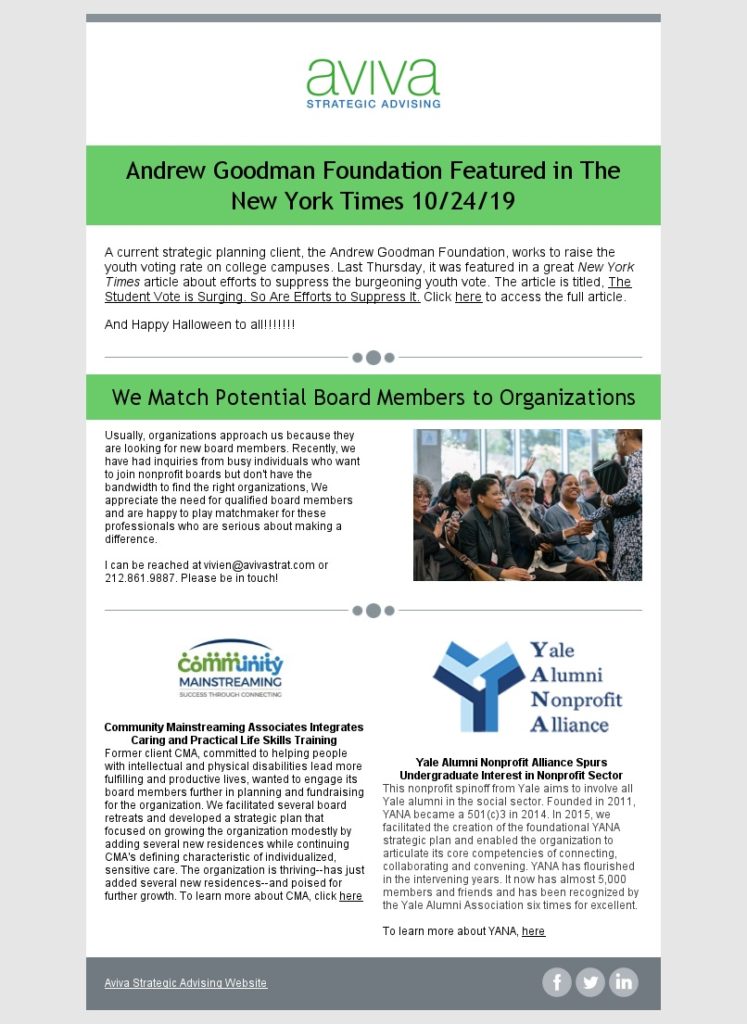*With thanks to the Decembrists, whose song January Hymn has been brightening my days.
It is day two of the new Administration, and hope is in the air. Despite the events at the Capitol on January 6, we had a peaceful transfer of power yesterday, and action on the coronavirus is coming. Many nonprofits will be able to take advantage of another round of PPP and EIDL loans, giving their organizations more time to plan for revenue in a post-pandemic world.
My advice is that nonprofits explore earning income as one component of their new revenue generating strategies. My December blog defined and gave examples of nonprofit earned income. This month, the blog gets more practical, guiding you through some of the issues you might consider as you contemplate what earning revenue for your nonprofit would entail.
What if you are just starting your nonprofit?
The ideal way to start down the earned income path is to think about it when you launch your nonprofit. Jessica Cavagnero, a partner in the nonprofit consulting firm SeaChange Capital Partners, says “…the most successful organizations have considered earned income up front as part of their strategy and have always thought strategically about how to keep it core to the organization.”
An excellent example of earning income from the first day is Inclusion NextWork, a nonprofit focused on empowering and training the next generation of leaders in diversity and inclusion. The organization grew out of a two-day, volunteer-led conference that brought together 60 emerging leaders. The Chronicle of Philanthropy had just received a grant for diversity work, learned about the conference and hired INW to help with a diversity plan at the Chronicle. In its first year of operation, INW has received almost exclusively corporate support and is only now focused on building a contributed revenue stream.
What if your nonprofit is not new?
Unlike INW, most nonprofits have been in existence for a long, long time without contemplating earned revenue. Here are a few things to keep in mind as you start your established organization down an earned income path.
Prepare a business plan
Make sure to have a process and business plan in place for the new venture before you start. This would include:
Investment required over a defined period of time—almost certainly more than a year
Benchmarks the strategy must achieve to be renewed
Staffing plan for the venture.
The bottom line: You must resource your earned income projects appropriately, with people and non-personnel dollars. You may need to lose money for a defined period of time, as a business would if it were investing in a new product or service.
Consider creative ways to fund the plan
You may be able to raise funds from a foundation or a major donor for your earned income pilot. Philanthropic Investors often find these types of projects sexy, especially if the donors come from the business world. And donors love the idea that you may eventually not need them as much as you did before you started earning income.
Be willing to exit.
Be willing to stop exploring earned income if the numbers don’t work out over time. We all want to believe our projects will be successful, but sometimes they aren’t. You will almost certainly learn a tremendous amount through the process, even if you decide in the end that contributed revenue is not the way to go for your organization—for today.

